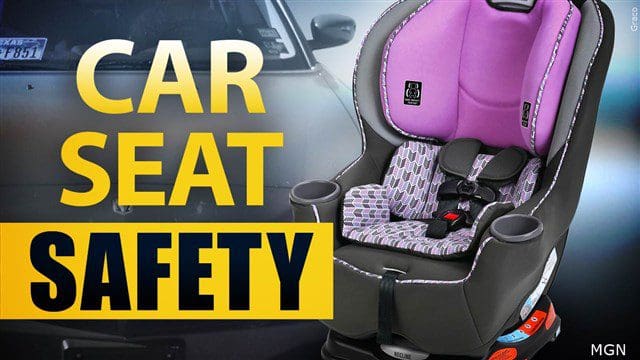Kansas City, MO- Parents and caregivers have a lot on their plates, including making sure every child is safe while in a vehicle. The U.S. Department of Transportation’s National Highway Traffic Safety Administration’s (NHTSA) Region 7, which includes Arkansas, Iowa, Kansas, Missouri, and Nebraska, is announcing its annual Child Passenger Safety Week, September 18-24, 2022. The week is dedicated to educating parents and caregivers about the importance of correctly choosing, installing, and using car seats, booster seats, and seat belts to ensure their child is safe while in a motor vehicle.
NHTSA encourages everyone to take an hour or so out of this safety week to double-check their child’s car seat or booster seat. Ensuring that it’s the right seat for the child’s age and size and that it’s installed correctly can make a major difference in an accident.
“We hope that Child Passenger Safety Week will serve as a reminder and an opportunity for parents and caregivers to take a moment to ensure their child is as safe as possible when in a car, truck, or SUV,” said Regional Administrator Susan DeCourcy. “Sadly, two children under 13 were killed every day in 2020 while riding in vehicles. In our region alone, 94 children lost their lives in crashes that year. Every parent wants to be sure that their child is as safe as possible in a vehicle.”
Motor vehicle crashes are a leading cause of death among children, and the latest research from NHTSA shows that nearly half (46%) of car seats are misused. Using age- and size-appropriate car seats and installing them correctly are the best ways to reduce these deaths. “More than one-third of children 12 and younger who died in crashes in 2020 were unbuckled. Never let your children ride unbuckled—the consequences could be devastating,” said DeCourcy.
Car Seats Versus Booster Seats
There is also a deadly misconception that a certain type of vehicle may offer greater protection for your child. Children are safest when correctly secured in the right car seat or booster seat for their age and size—regardless of the vehicle type. No matter how safe you think your vehicle may be, it is never safe, nor legal, to let your child ride unbuckled.
Keep children rear-facing as long as possible, up to the top height and weight allowed by their particular seats. It’s the best way to keep them safe. Once a child outgrows the rear-facing car seat, he or she is ready to travel in a forward-facing car seat with a harness and tether. After outgrowing the forward-facing car seat, a child should be placed in a booster seat until tall enough to fit in a seat belt properly.
Booster seats are an essential step between car seats and seat belts. These transitional seats position the seat belt so that it fits properly over the stronger parts of your child’s body. Don’t feel pressured to put your child in a seat belt too soon. If your child is ready to use a seat belt, ensure the seat belt fits correctly. The bottom line is that the safest place for all kids under 13 is in the back seat, whether in a car seat, booster, or seat belt.
Learn About Car Seat Safety
NHTSA hopes to empower parents and caregivers with helpful resources to make life a little easier. During Child Passenger Safety Week, you can find out if a technician is available in your community by virtual appointment by visiting www.nhtsa.gov/carseat. You can filter your search results to show Spanish-speaking technicians, virtual appointments, and Child Passenger Safety Week events.
For more information on child car seat safety, as well as how to find other virtual car seat check events, go to www.nhtsa.gov/therightseat.













